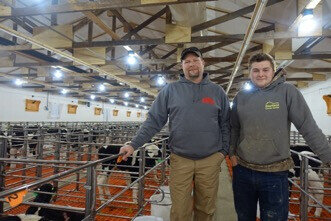By Tom Venesky, Lancaster Farming
March 1, 2025
Veal has a new selling point.
Its environmental impact is lower than beef’s and in line with that of pork and chicken, according to an industry study. Last year the American Veal Association began work on its first-ever life cycle assessment, which estimates the efficiency of converting resources like energy, fuel and feed into meat.
The study found U.S. farms that produce veal have an environmental impact of 2.88 kilograms of greenhouse gas emissions per kilogram of veal from the time the calves are born to when they leave the barn for processing.
Sonia Arnold, the president of the association and a manager at Marcho Farms in Souderton, Pennsylvania, called the findings a “milestone” for the industry that offers another level of transparency for consumers.
“We’ve had customers ask about our carbon footprint, and now we have the numbers to make that conversation easier,” she said. “We can say we’re in the ballpark with chicken and pork, and lower in greenhouse gas emissions than beef. It’s nice to have that data.”
“The 2.88 figure tells me our calves are pretty efficient,” she said. “The animal welfare side is of major importance to us.”
Efficiency and animal welfare are both crucial to the veal industry’s message and transparency. Arnold said the industry has made significant improvements in animal health, including raising calves in group pens and adhering to science-based Veal Quality Assurance standards.
Read the full news article here: Lancaster Farming
















